London looked better at night in these pictures by Harold Burdekin (1899-1944). With his collaborator John Morrison, Burdekin photographed London after dark for his book London Night, published in 1934. A year earlier, the photographer George Brassaï had published his influential Paris de nuit (Paris at Night). But unlike that volume and Bill Brandt’s 1938 photobook A Night in London, Burdekin’s city is almost devoid of life.
Going out at night to take pictures was a rare thing to do in the 1930s. But it was in fashion. There’s the Berlin bei Nacht (1930s) postcard series, whose photographers remained generally anonymous, Moscow illuminations. Celebration of the Tenth Anniversary of the Russian Revolution (1927), by the photographer and cinematographer Roman Karmen (1906–1978), and Tokio bei Nacht (1937), whose photographer is not known. The Franco-Belgian photographer Georges Champroux assembled 19 black-and-white photographs in 1935 in Bruxelles la nuit and Hermann Larsen portrayed the nocturnal city of Copenhagen in Kobenhavn ved nat.
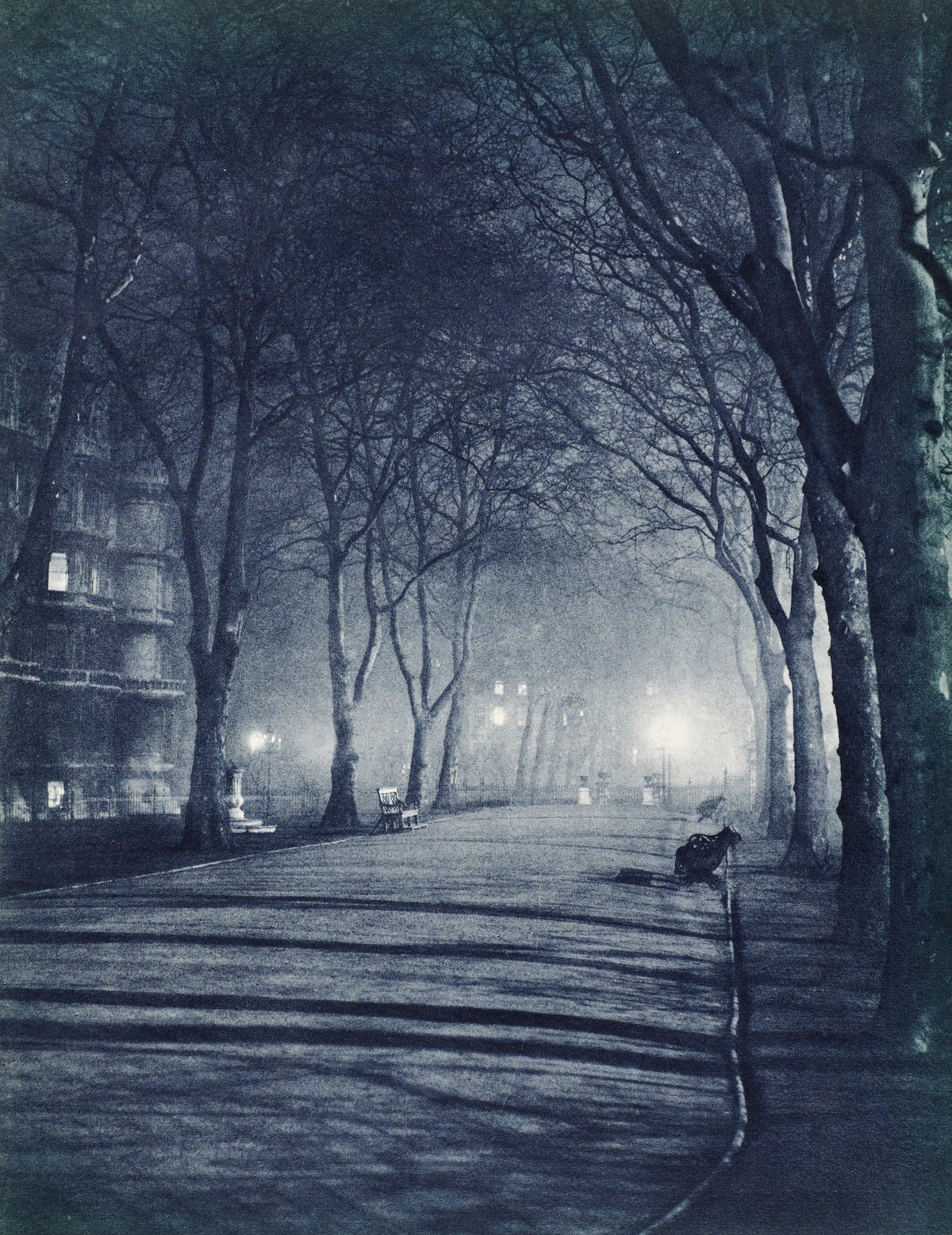
Temple Gardens at night 1934
So any photographer worth their salt was going out to capture the city at night. To assist them in their explorations, Marcel Natkin published in 1934 his practical guide Pour réussir vos photos à la Lumière Artificielle. The chapter Dans la rue includes practical advice for those looking to take photographs of theatres, cafes, shops or neon signs at night. The book is illustrated with Brassaï’s photographs, with no mention of Burdekin, who was killed by a German flying bomb in 1944 and has long not been afforded the credit his work deserves.
And that’s a shame. Because things were different in Burdekin’s London Night. There is barely any neon. There is a lack of modernity. The buildings are not reshaped by electricity as it conquers the night. Save for the flickering lamps, nothing much is suggestive of movement.
The writer Pierre Mac Orlan had dissociated such luminous signs from their supporting structures in 1924 when he wrote (via Ruth Hommelen): ‘The sky will become an immense book in which essential advertising sentences will be engraved in flaming letters. It’s already done.” Lighting became ‘a drawing in the night’, for which ‘the sky or large architectural masses serve as background and screen.”
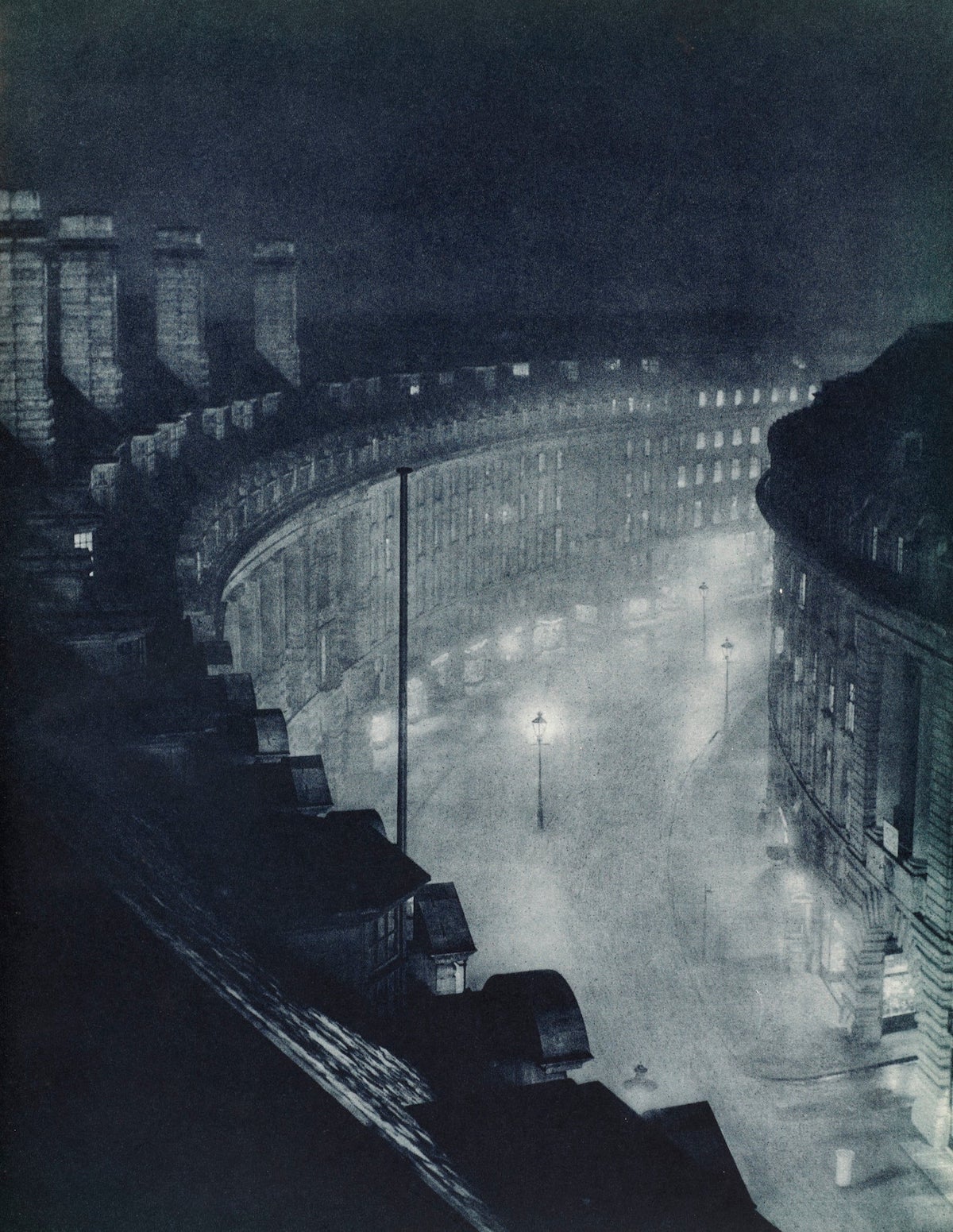
Regent Street at night 1934
Burdekin captured the mood of old London, where ghosts walk among us and ancients and their stories live in layers beneath your feet. His is a city of dimly it streets, shadows and narrow streets where light and shade interplay on the city’s traditional architecture.
London Night was printed in blue photogravure – the same process that was used for Brassai’s book. Burdekin shows us London before before the Clean Air Act of 1956 was passed as a response to the Great Smog of 1952, which was caused by coal burning from factories, power stations, domestic fireplaces and sodium lighting.

View over London at night 1934

Black Raven Alley, Upper Thames St
Educated at Rugby School, Burdekin joined the Royal Field Artillery at age 17 and saw military service in World War 1. Returning to civilian life he embarked upon a career as a professional photographer and set up a studio in Reigate, Surrey. He became an Associate of the Royal Photographic Society and a Fellow of the Institute of British Photographers, publishing a number of very successful books of his work during the 1930s.
During the Second World War Harold Burdekin became a Fire Guard. Having survived military service in the Great War he was killed by a flying bomb that struck Reigate on 22nd July, 1944. The area was hit many times by V1 and V2 weapons during the year – it lay within what became known as “Doodle Bug Alley”, the flight path towards London (via).
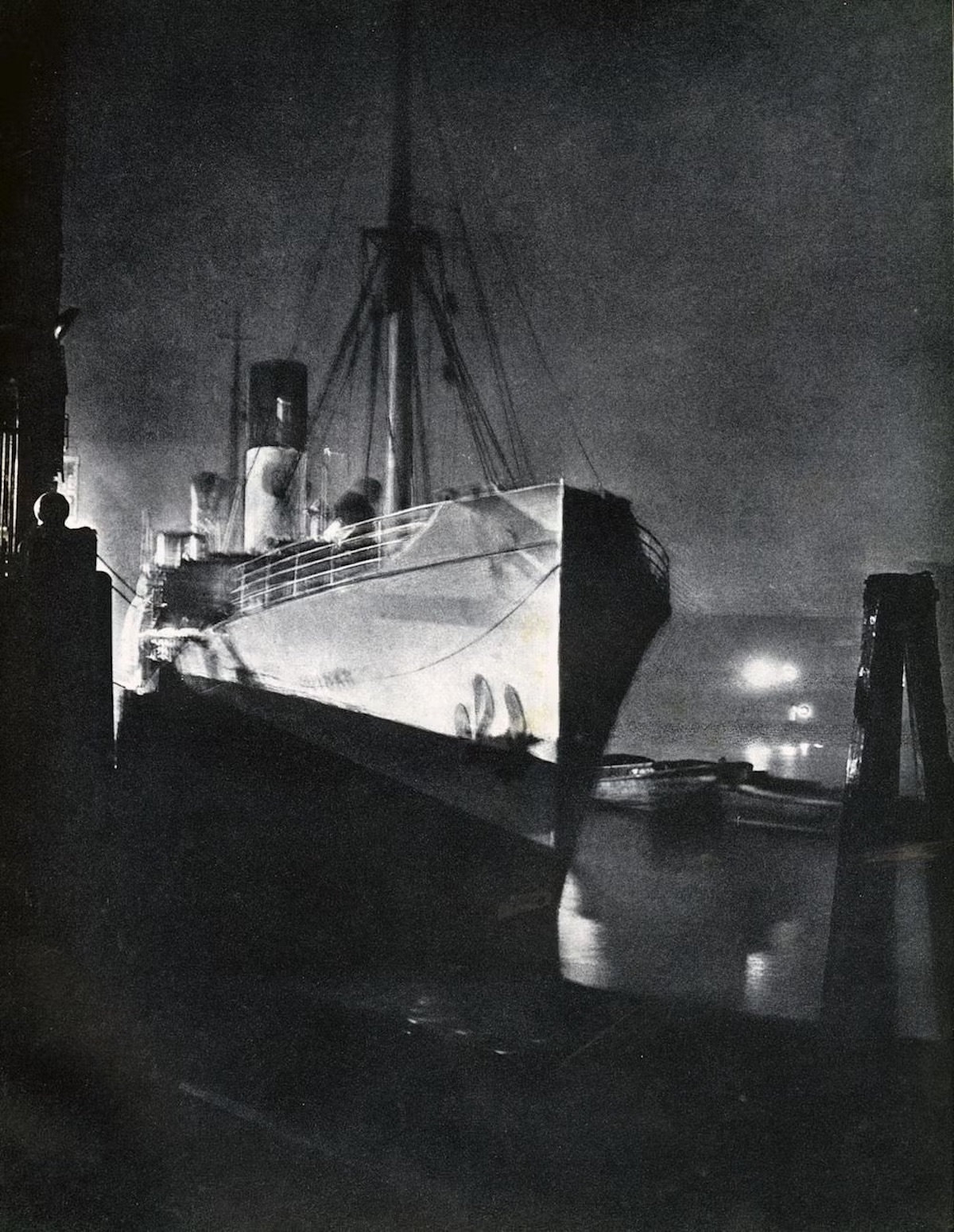
The Docks

Some neon in Leicester Square, Piccadilly.

View over London at night 1934

St. Bartholomew’s Hospital, City of London
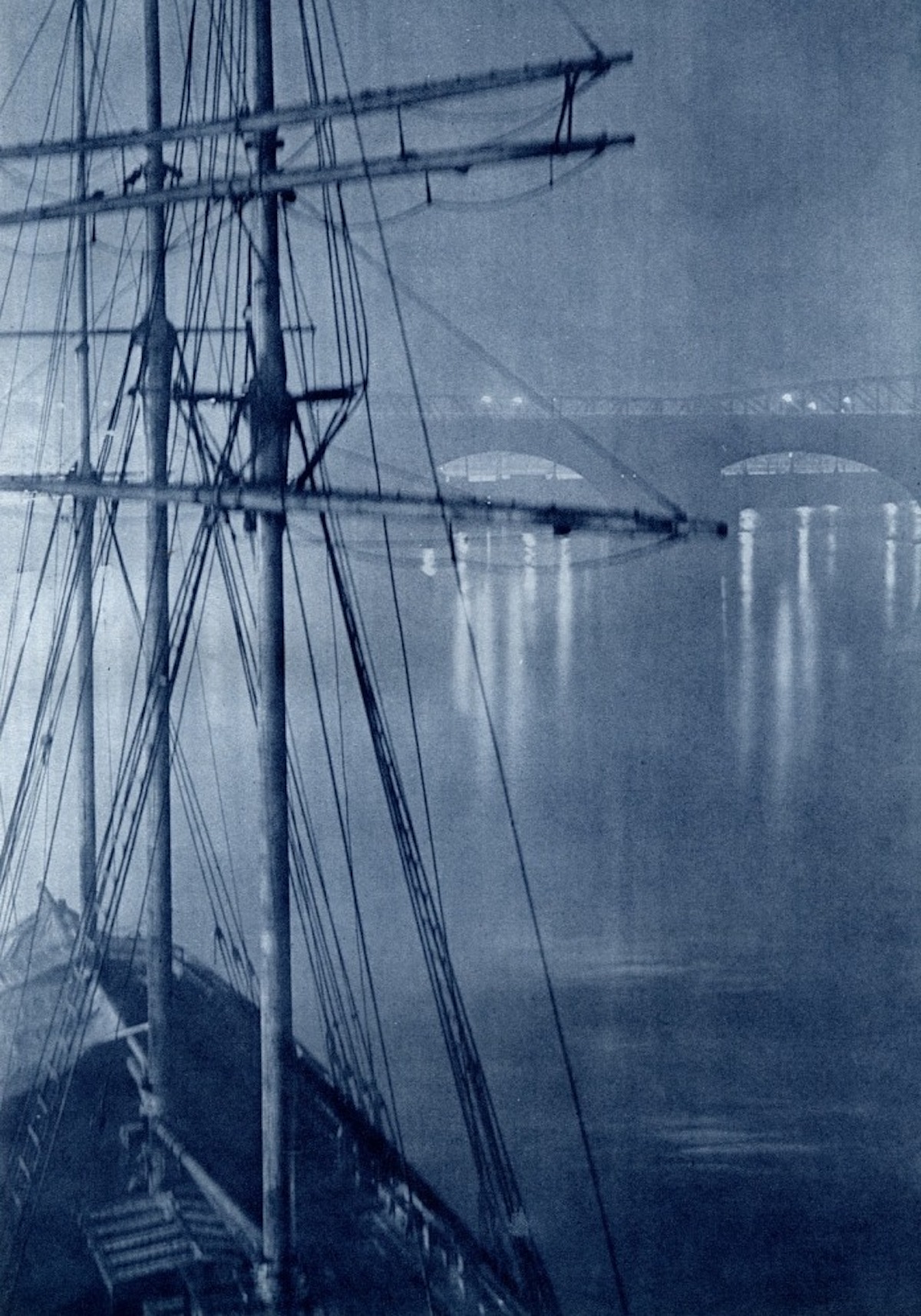
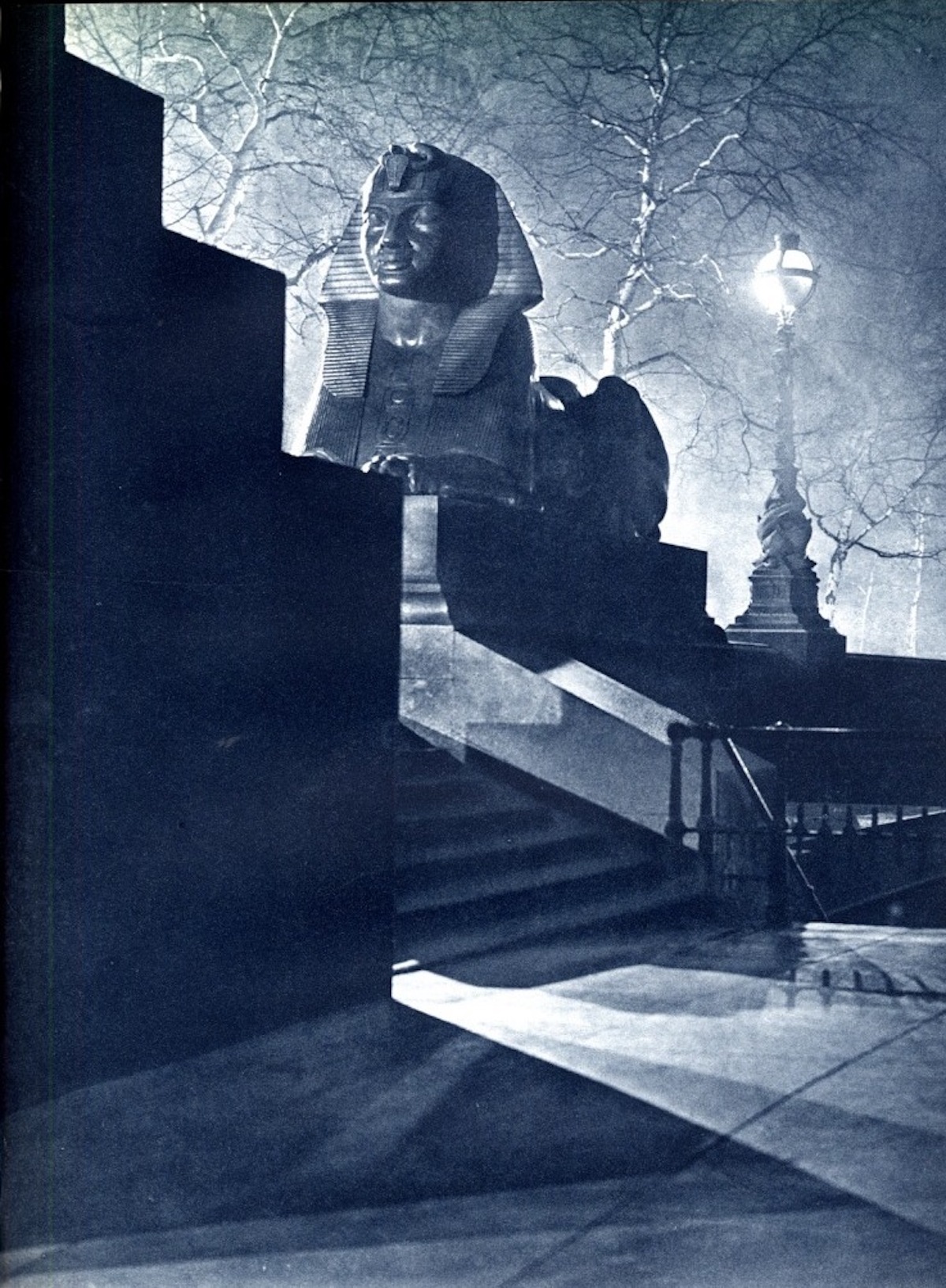


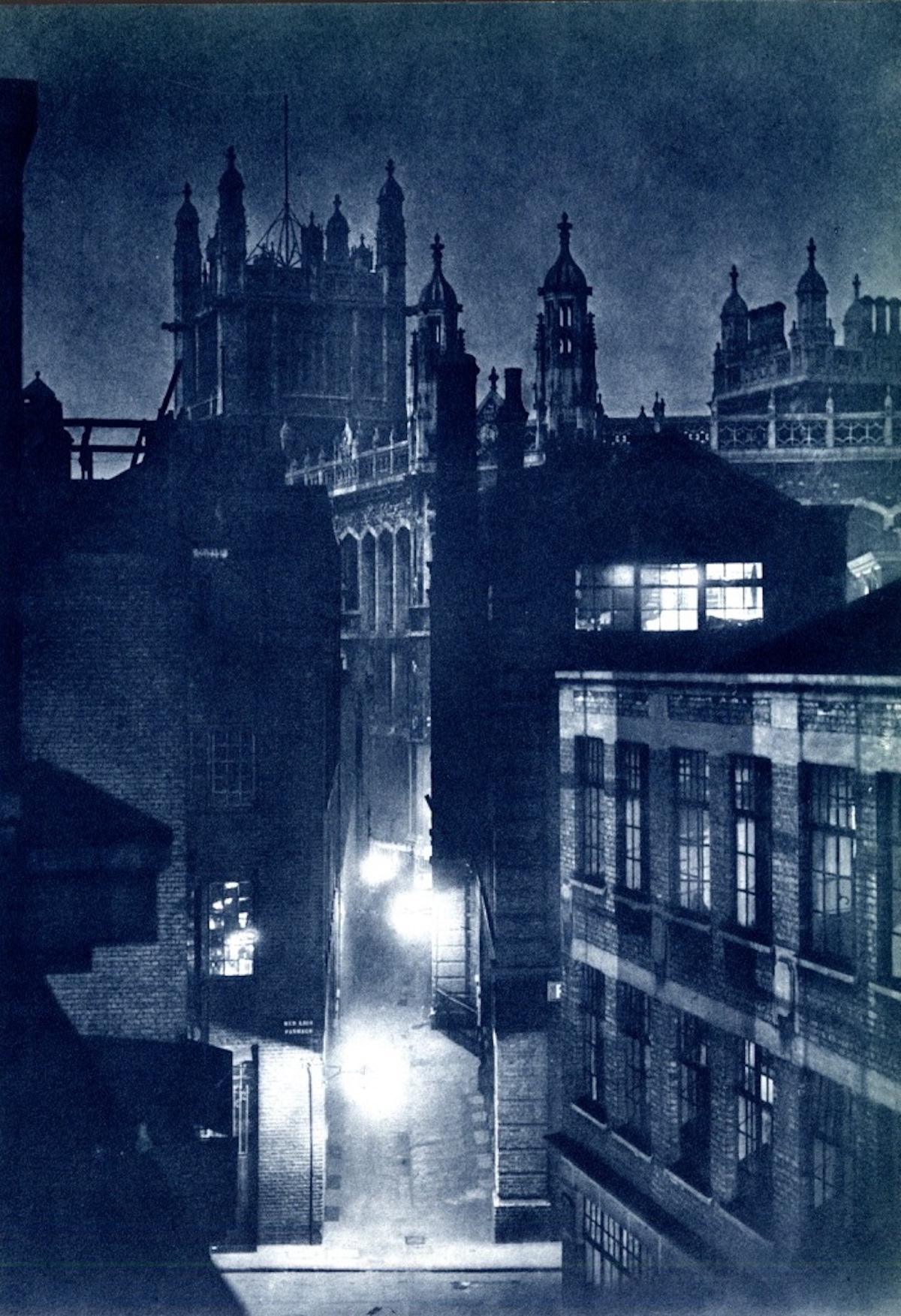
Via: Bishopsgate Library.
Would you like to support Flashbak?
Please consider making a donation to our site. We don't want to rely on ads to bring you the best of visual culture. You can also support us by signing up to our Mailing List. And you can also follow us on Facebook, Instagram and Twitter. For great art and culture delivered to your door, visit our shop.











